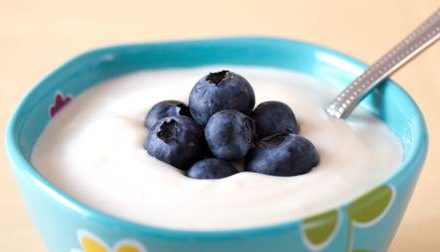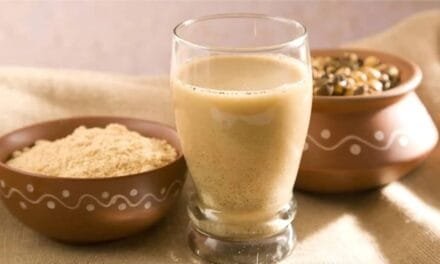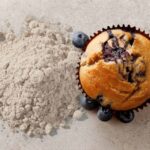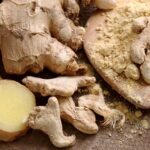Ice cream is relished by all age groups. Ice cream possesses much nutritional value but it does not have any functional property. Herbs can be easily incorporated into ice cream for preventive and remedial purposes, writes C. Pandiyan. This study is proposed to incorporate Phyllanthus niruri in the herbal ice cream or natural ice cream preparation with the objectives to find out the suitable part of the herb for incorporation.
Plants have been traditionally used for agricultural practices and for homestead remedies. Self-reliance and self help in basic primary health care is essential for citizens to lead a healthy life. This self-reliance can be achieved at a low cost by reviving and popularizing simple, yet effective, traditional methods of treating common diseases.
Ice cream is relished by all age groups. Ice cream possesses much nutritional value but it does not have any functional property. Herbs can be easily incorporated into ice cream for preventive and remedial purposes. Phyllanthus niruri is a widespread tropical plant commonly found in coastal areas, known by the common names gale of the wind, stonebreaker or seed-under-leaf.
The plant parts Phyllanthus niruri of contain phyllanthine, hypophyllanthine and flavanoids viz. quercitin, astralgin, quercitrin, isoquercitrin and rutin (Syamasundar et al., 1985). Phyllanthus niruri is a herbal medicine with anti-viral effect and which is commonly used for the treatment of respiratory and liver diseases (Shimizu et al., 1989). Also, it is used to treat hepatitis, jaundice, gonorrhea, frequent menstruation and diabetes (Syamasundar et al., 1985).
Incorporate Phyllanthus niruri in herbal ice cream
This study is proposed to incorporate Phyllanthus niruri in the herbal ice cream preparation with the objectives to find out the suitable part of the herb for incorporation, to find out the acceptable level of selected herbs by sensory evaluation and to develop an herbal ice cream.
Fresh cow milk was procured from the livestock farm, Veterinary College and Research Institute, Namakkal. Butter (Aavin Dairy), skimmed milk powder (Sagar), stabilizer and emulsifier, sugar, and vanilla flavour were procured from the local market. Freshly collected whole plant of Phyllanthus niruri was washed with distilled water, shade dried and ground into fine powder.
As shown in Table 1, calculated quantity of milk and butter was heated to 65°C and then it was homogenized by a two stage homogenizer (I stage 2500 psi and II stage 500 psi) to make uniform emulsion. The mix was then heated to 75°C, followed by addition of the skimmed milk powder, sugar, stabilizer and emulsifier with constant stirring so as to dissolve the constituents completely.

The ice cream mix was pasteurized at 80°C for 30 seconds and aged for overnight at 5°C (Bodyfelt et al., 1988). After ageing, all the control and experimental ice cream mixes were inoculated with vanilla flavour and then the mixes was frozen separately by using a batch freezer and the ice cream samples were hardened and stored at –18 to –23°C. Phyllanthus niruri was dried and ground into fine powder. It was mixed with ice cream mix at the level of 1, 1.5, 2 and 2.5 per cent levels at the time of freezing. Then the mix was frozen using softy ice cream machine and was stored at –25°C before sensory evaluation.
The total solids and fat content of control and experimental herbal ice cream were maintained at 10 and 36 per cent respectively (Bureau of Indian Standards, 1964), so as to produce ice cream with proper body and texture. Stabilizer and Emulsifier (SE) were added at rate of three per cent levels.
Herbal ice cream or natural ice cream prepared with the Phyllanthus niruri did not exhibit any body and texture defects. Phyllanthus niruri incorporated at 1 and 1.5 per cent levels in the herbal ice cream, showed no bitterness and herbal flavour. Phyllanthus niruri incorporated at 1 per cent level scored maximum points by the sensory panel. Mild bitterness was observed at 2 per cent inclusion and beyond 2.5 per cent showed strong bitterness and was objectionable by the sensory panel.
Conclusion
It may be concluded that Phyllanthus niruri can be incorporated into natural ice cream or herbal ice cream up to 1.5 per cent level without affecting the sensory properties and to harvest its therapeutic benefits to the consumers.
FAQs Related to Herbal Ice Cream
What is herbal ice cream or natural ice cream?
Herbs can be easily incorporated into ice cream for preventive and remedial purposes. Ice cream possesses much nutritional value but it does not have any functional property.
What were Objectives for preparation of herbal ice cream?
Objectives of herbal ice cream preparation was to to find out the suitable part of the herb for incorporation. And to find out the acceptable level of selected herbs by sensory evaluation and to develop an herbal ice cream.
How Phyllanthus Niruri can be used in natural ice cream or herbal ice cream?
Phyllanthus niruri can be incorporated into herbal ice cream up to 1.5 per cent level without affecting the sensory properties
Also Read: Top 10 ice cream brands in India
Also Read: Opportunities for ice cream industry in India
References
- Bodyfelt, F. W., Tobias, J. and Trout, G.M. (1988). The sensory evaluation of dairy products. AVI Publ. New York, 48.
- Bureau of Indian Standards. (1964) 2802 Indian standard for ice cream, Indian Standard Institution, New Delhi, 3, (1964).
- Shimizu, M., Horie, S., Terashima, S., Ueno, H., Hayashi, T., Arisawa, M., Suzuki, S., Yoshizaki, M. and Morita, N. (1989) Studies on aldose reductase inhibitors from natural products. II. Active components of a Paraguayan crude drug “Para-paraimi,” Phyllanthus niruri. Chem Pharm Bull (Tokyo): 37(9): 2531-2.
- Syamasundar, K.V., Singh, B., Thakur, R.S., Husain, A., Kiso, Y. and Hikino, H. (1985) Antihepatotoxic principles of Phyllanthus niruri herbs. J. Ethnopharmacol. 14(1): 41
Photo by Racool_studio-www.freepik.com
















